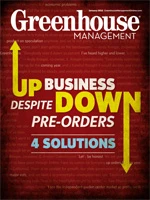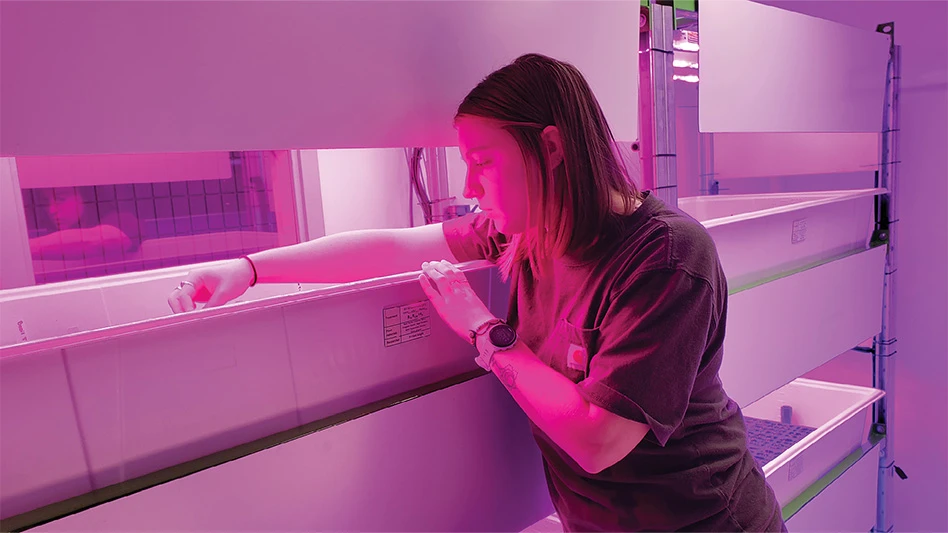 Bridget K. Behe Bridget K. Behe |
We got 10 inches of snow on November 30. The power was out for 14 hours and the sump pump was full in the basement. I needed power fast and bought a generator. I wanted to know how to get it started - fast. We fired it up without a glance at the directions. I’m guilty, and you probably are, too. We simply don’t read the directions. The label is there for our benefit, but we’re in too much of a hurry. A 2003 survey conducted by the Soap and Detergent Association showed that 49 percent of Americans never read the directions on a laundry soap package. That leads to overuse of the soap, much to the benefit of the detergent makers and the possible detriment of the environment. Our customers are probably guilty, too. So, what’s on the label? How can we make it more helpful, less cumbersome and enable the purchasers of our products to be more successful?
Embrace smart tags Maybe signs can help? The one sign that has great potential is the smart tag. When used well, smart tags or QR codes can point customers to additional information that cannot or will not fit on the label. When used with a smart tag reader, the code is a two-dimensional address for a website. When used incorrectly, that website is the homepage of the business. The QR code should take the customer to a page created just for that particular product. Dubious about who might be using those smart tags? A May 2011 online survey of 1,682 U.S. residents (not only plant purchasers) conducted by universities (Michigan State, Purdue, University of Minnesota and Texas A&M) and The Vineland Research Station in Ontario, Canada, showed that nearly 60 percent of Gen X and millenials surveyed owned a smartphone, but so did 38 percent of Gen Y and 17 percent of the baby boomers. The study showed them a smart tag and asked whether they’d seen that symbol before. Not surprising, a higher percentage of the younger study participants had seen a QR code. In fact, 79 percent of the millenials and 75 percent of Gen Yers had seen a QR code, compared to 61 percent of Gen Xers and 42 percent of the baby boomers. Still, nearly half to three-fourths of all consumers had seen one of these labels by May of 2011. What was really surprising was the percentage of participants who had purchased something gardening or plant-related from their smartphone - approximately 20 percent of the millenials and 17 percent of Gen Xers, compared to 14 percent of the boomers. Some 48 percent of the study participants had accessed gardening or plant-related information from their phone, compared to around 85 percent who accessed any type of information online from their smartphone. And there was no difference by age group as to who accessed gardening or plant-related information or any other type of information from their smartphone. We know these percentages are likely to increase for spring 2012. Still, we need to direct consumers to specific and pertinent information about a particular plant or gardening product, not just to a general website about the business that makes or sells it. Lots of specific information might be depicted on a webpage connecting consumer to product. And this is where a savvy supplier should develop a competitive advantage by providing product-specific particulars on the page created for the QR code. Information about the plant or product is a given, but to that could be added images, recipes, customer reviews, recommendations of products to go with that particular item, as well as more information about the producer and that business enterprise.
Many states have promotional campaigns to stimulate the purchase of local products, realizing the importance local purchases have on the economy. The Michigan Christmas Tree Growers Association, Michigan Floriculture Growers Council and Michigan Floral Association teamed together to obtain a 2011 Specialty Crop Block Grant from the Michigan Department of Agriculture to “Make it a Real Michigan Christmas” and stimulate the purchase of Michigan-grown poinsettias and Christmas trees. The desire to support our community is becoming an increasingly greater part of the purchase decision. The local aspect of plant production and/or sales should be a part of the plant label. It speaks directly to the authenticity of the producer, seller and product. Consumers want to see who grew their food and the farm on which it was grown. Why not convey some of that information to interested consumers for the plants they buy this spring?
Help customers succeed Similarly, I still haven’t read the directions for my generator, but I kept them for the next time we might need it in a hurry. But we got the generator running and the sump pumping. The basement didn’t flood, and the power came back on 15 minutes after the pump did its job. |

Explore the January 2012 Issue
Check out more from this issue and find your next story to read.
Latest from Greenhouse Management
- USDA fires experts on invasive pests, including Asian citrus psyllid, chilli thrips
- CEA Alliance celebrates bipartisan introduction of Supporting Innovation in Agriculture Act
- Dümmen Orange North America celebrating 25th anniversary in 2025
- CEA HERB Part 1: Best management practices for culinary herbs
- Lawsuit challenges new H-2 visa rules
- CEA HERB Part 2: A guide to increasing the sowing density of culinary herbs
- Illinois Landscape Contractors Association changes name to Landscape Illinois
- 2025 Proven Winners Horticulture Scholarship applications now open
 The obvious critical items are the plant name and some light and water requirements. How that information is conveyed isn’t as straightforward. Latin is the language of the professional, but a dead language for most of our customers. Photo identification helps, but only when the plant is in flower or the attribute in the image is actually on the plant at the time the customer makes a purchase. Full sun, half a sun and a big cloud might do a better job conveying the plant’s light requirements. Water demand is a result of the sun requirement, but we don’t do a great job linking those two together. Planting time (or plant hardiness) and planting depth, spacing and mature height improve the odds of a successful experience. If we need to report that information in more than one language, we’ve exceeded the small and medium-sized plant labels already.
The obvious critical items are the plant name and some light and water requirements. How that information is conveyed isn’t as straightforward. Latin is the language of the professional, but a dead language for most of our customers. Photo identification helps, but only when the plant is in flower or the attribute in the image is actually on the plant at the time the customer makes a purchase. Full sun, half a sun and a big cloud might do a better job conveying the plant’s light requirements. Water demand is a result of the sun requirement, but we don’t do a great job linking those two together. Planting time (or plant hardiness) and planting depth, spacing and mature height improve the odds of a successful experience. If we need to report that information in more than one language, we’ve exceeded the small and medium-sized plant labels already. Print plant origination on tags
Print plant origination on tags






